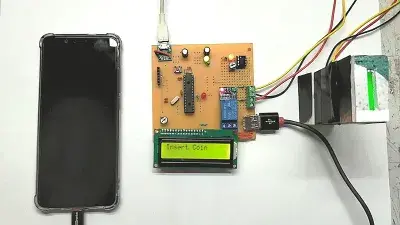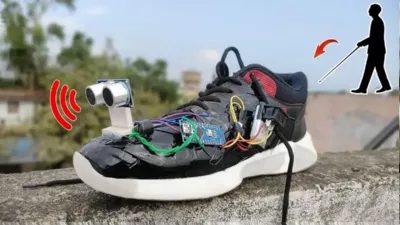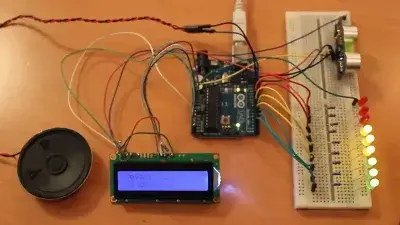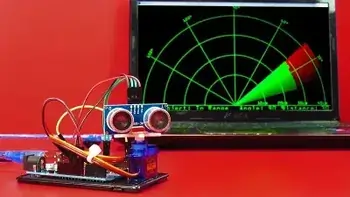If you're interested in robotics and want to try your hand at building your own, an Arduino-based multi-shape robot project could be a great place to start. This type of robot is designed to change shape and perform different tasks based on its programming, making it a versatile and exciting project for both beginners and experienced makers.
The robot is typically built around an Arduino board, with motors, sensors, and other components used to control its movement and shape. The robot can be programmed to change shape and perform various tasks, such as moving objects, following a line, or avoiding obstacles.
One of the key advantages of an Arduino-based multi-shape robot is its versatility. With the ability to change shape and perform different tasks, it can be used in a variety of settings, such as industrial automation, home automation, or even as a toy for kids.
To build an Arduino-based multi-shape robot, you will need to source the necessary components, including the Arduino board, motors, sensors, and other components. You will also need to design and assemble the robot, ensuring that it is stable and capable of changing shape as needed.
Once built, the robot can be programmed using the Arduino software, which allows you to write and upload code to the board. This gives you full control over the robot's movements and tasks, allowing you to customize it to your needs and preferences.
Overall, an Arduino-based multi-shape robot project is an exciting and rewarding challenge for anyone interested in robotics. With its versatility and customizability, it offers endless possibilities for exploration and creativity. So why not dive in and start building your own today?
Abstract:
The Arduino-based multi-shape robot project is a cutting-edge innovation that combines the versatility of Arduino programming with the functionality of a robot capable of transforming into multiple shapes. This project aims to design, build, and program a robot that can change its shape based on the environmental requirements or tasks assigned. The project utilizes Arduino microcontroller, servo motors, sensors, and a mechanical framework to create a multi-shape robot capable of performing various tasks in different configurations. This report highlights the project's objectives, methodology, results, and potential applications, emphasizing the significance of Arduino-based projects in the field of robotics.
Keywords: Arduino, multi-shape robot, microcontroller, servo motors, sensors, mechanical framework.
Introduction:
The field of robotics has seen significant advancements with the integration of Arduino microcontroller boards, which provide an affordable and versatile platform for designing and building robots. Arduino, an open-source hardware and software platform, offers a wide range of microcontroller boards that are programmable and can interface with various sensors, motors, and other electronic components. This has made Arduino a popular choice for DIY electronics projects, including robotics.
The Arduino-based multi-shape robot project aims to create a robot capable of transforming into different shapes based on the specific requirements of the task or environment. The project involves designing and building a mechanical framework that can change its shape using servo motors controlled by an Arduino microcontroller. The robot will also be equipped with sensors to gather environmental data and respond accordingly to different situations.
Objectives:
The main objectives of the Arduino-based multi-shape robot project are as follows:
Design and build a mechanical framework that can transform into multiple shapes based on the requirements of the task or environment.
Develop a control system using Arduino microcontroller and servo motors to control the movement and shape transformation of the robot.
Incorporate sensors to gather environmental data and enable the robot to respond accordingly to different situations.
Program the Arduino microcontroller to execute the desired shape transformation and task-specific functionalities.
Test and evaluate the performance of the multi-shape robot in different configurations and environments.
Results:
The Arduino-based multi-shape robot project aims to achieve the following results:
Design and fabrication of a mechanical framework that can transform into multiple shapes based on the requirements of the task or environment.
Integration of Arduino microcontroller, servo motors, sensors, and other electronic components into the mechanical framework.
Development of a control system using Arduino microcontroller and servo motors to control the movement and shape transformation of the robot.
Conclusion:
The Arduino-based multi-shape robot project showcases the potential of Arduino microcontroller boards in the field of robotics. The project demonstrates the design, fabrication, and programming of a robot capable of transforming into multiple shapes based on task-specific requirements or environmental conditions. The robot's ability to adapt its shape, move smoothly, and respond to environmental data opens up possibilities for various applications in fields such as search and rescue, industrial automation, surveillance and security, and education and research. This project highlights the significance of Arduino-based projects in advancing the field of robotics and inspiring further innovations in the future.













